Is Your Colombia Factory Struggling with reducing manual strain in coffee and fruit logistics? Try a Pallet Changing Machine
Your team in the warehouse is the backbone of your Colombian coffee or fruit export business. But day after day, they are lifting heavy sacks of coffee beans or crates of delicate fruit. You see the strain on their faces and you know the physical toll it takes. This manual handling is slow, creates bottlenecks, and worst of all, leads to workplace injuries. The costs from lost time, insurance claims, and high employee turnover are a constant pressure on your bottom line. It feels like a problem with no easy solution.
Yes, a pallet changing machine, also known as a pallet inverter, is an effective solution for Colombian coffee and fruit factories looking to drastically reduce manual strain. This equipment automates the process of transferring goods from one pallet to another. It securely clamps and rotates the entire load, allowing a single operator to swap pallets in minutes without any heavy lifting. This protects your workers from injury, prevents damage to valuable products like specialty coffee or export-grade fruit, and significantly speeds up your entire logistics workflow.
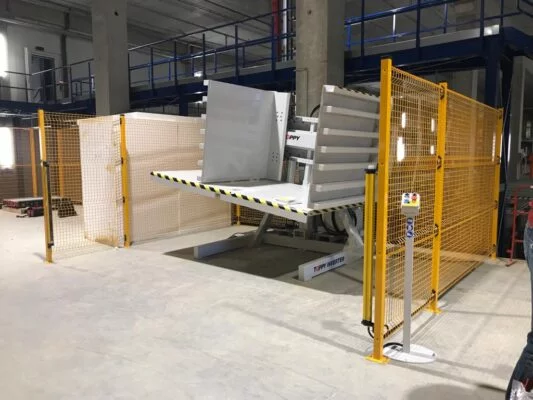
I've seen these challenges firsthand. As an engineer and factory owner, I understand the pressure to be both productive and safe. You need your logistics to be fast and reliable, especially when dealing with international shipments. But you also have a responsibility to your people. The good news is that you don't have to choose between them. Modern technology offers a way to improve both. Let's explore how a pallet changing machine can be a game-changer for your operations in Colombia.
How does a pallet changer specifically reduce physical strain on workers?
Your workers are repeatedly asked to lift loads that are heavy and awkward. A single sack of green coffee can weigh up to 70kg. Moving an entire pallet's worth of these sacks by hand is a recipe for chronic back pain and sudden, serious injuries. You worry about your team's well-being and the constant risk of a costly workplace accident. This persistent threat hangs over your operation, affecting morale and productivity. Imagine if you could remove that risk entirely, creating a safer and more positive work environment for everyone.
A pallet changer reduces physical strain by using mechanical power to do all the heavy lifting. The machine's core function is to securely clamp the product load, tilt or rotate it, and allow the original pallet to be removed and replaced. The operator's job changes from physically demanding labor to supervising a machine. This simple change eliminates the primary cause of musculoskeletal injuries in logistics: manually lifting heavy items.
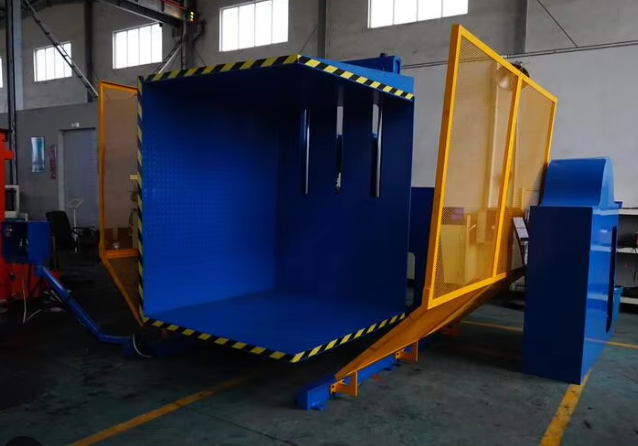
The Mechanics of Eliminating Manual Lifting
A manual pallet transfer is a sequence of strenuous movements. A worker has to bend down, lift a heavy sack or crate, twist their body, and place it on a new pallet. They repeat this motion 20, 30, or even 40 times for a single pallet. Each repetition puts immense stress on the lower back, shoulders, and knees.
A pallet changer replaces this with a simple, automated process. The operator uses a forklift to place the entire palletized load into the machine. They then use a control panel to activate the clamping system. Padded walls press in from the sides and top, holding the coffee sacks or fruit boxes securely in place. The machine then rotates 180 degrees, turning the load completely upside down. The original pallet is now on top, free to be removed. After a new pallet is put in place, the machine rotates back. The entire process requires no manual lifting of the product itself.
Let's compare the two processes side-by-side:
| Manual Pallet Transfer | Pallet Changer Process |
|---|---|
| 1. Two workers approach the pallet. | 1. One operator loads the pallet with a forklift. |
| 2. Worker 1 bends and lifts a 70kg sack. | 2. Operator presses a button to clamp the load. |
| 3. Worker 1 twists and carries the sack. | 3. Operator presses a button to rotate the load. |
| 4. Worker 1 places sack on the new pallet. | 4. Operator uses forklift to remove old pallet. |
| 5. Repeat 20-40 times. | 5. Operator places new pallet. |
| 6. High risk of back, shoulder, knee injury. | 6. Operator presses a button to rotate back. |
| 7. Process takes 15-20 minutes. | 7. Operator unloads the pallet with a forklift. |
| 8. Fatigue leads to mistakes and damage. | 8. No physical strain. Process takes 1-2 minutes. |
My Personal Experience
I remember visiting a coffee cooperative high in the mountains outside of Medellín. The air was fresh and the scenery was beautiful, but inside the warehouse, the story was different. I watched two men work in tandem to move green coffee beans from simple wood pallets onto plastic export pallets. They were strong, but you could see the effort in every movement. I spoke with the floor manager, and he told me that lower back pain was the most common complaint among his team. He accepted it as a "cost of doing business." It was at that moment I knew my work in machine design could help. At SHJLPACK, we believe that safety isn't a cost; it's a foundation for success. We build solutions to solve these exact problems, helping good companies protect their people.
What are the main types of pallet changers suitable for coffee and fruit?
You know you need a solution, but choosing the right machine can feel overwhelming. You see different models and technical specifications. You worry about making a large investment in a piece of equipment that might not be right for your specific product. A machine designed for rigid boxes might damage your soft bags of coffee, or a system that is too slow could create a new bottleneck. You need clarity on what works best for the unique demands of Colombian coffee and fruit products.
The two primary types of pallet changers to consider are pallet inverters and pallet exchangers. Pallet inverters work by rotating the entire load 180 degrees. Pallet exchangers work by pushing the load from one pallet to another. The best choice for your factory depends on the stability of your products, your required cycle time, and the specific handling needs of either bagged coffee or crated fruit.
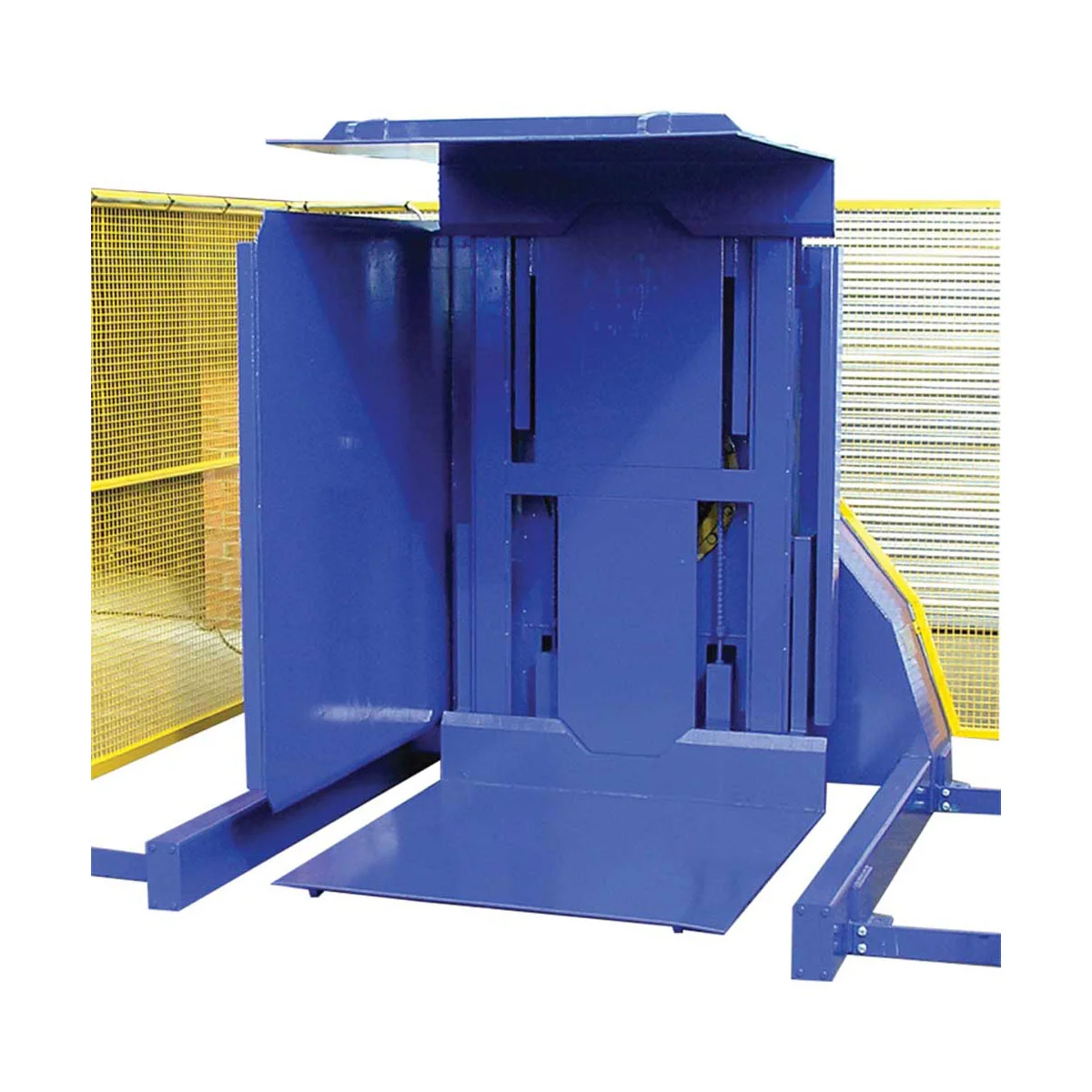
Pallet Inverters: The Secure 180-Degree Solution
Pallet inverters are often the best choice for products that are not perfectly uniform or stable, like sacks of coffee beans. The process is simple and very secure. The machine clamps the load from the top and sides, essentially creating a solid block. It then rotates the entire block 180 degrees. The original pallet is now on top and can be easily swapped.
This method is extremely gentle on the product because the load is fully supported throughout the entire motion. The clamping pressure can be adjusted to be firm enough to hold everything in place without crushing the contents. For high-value specialty coffee, where bean integrity is crucial, this secure handling is a major advantage.
| Pallet Inverter Pros | Pallet Inverter Cons |
|---|---|
| Excellent for irregular or unstable loads (e.g., bags). | Cycle time can be slightly longer (60-90 seconds). |
| Very secure clamping protects product integrity. | Requires a slightly larger footprint. |
| Simple, reliable mechanism. | Load must be able to be inverted. |
Pallet Exchangers: The Fast Push-Pull Method
Pallet exchangers, sometimes called pallet transfer systems, are ideal for stable, uniform loads like well-stacked boxes of fruit. These machines work differently. They typically clamp the load on two sides, lift it slightly off the pallet, and then a push plate smoothly slides the entire load from the source pallet onto the destination pallet.
This method is generally faster than a full rotation and can often be integrated directly into a conveyor line for a fully automated process. For high-volume fruit packing operations where speed is critical to maintaining the cold chain, a pallet exchanger can be a powerful tool. However, it's important to ensure your loads are stable enough for this type of transfer, as there is a greater chance of products shifting if they are not stacked securely.
| Pallet Exchanger Pros | Pallet Exchanger Cons |
|---|---|
| Faster cycle times (30-60 seconds). | Best for stable, flat-bottomed loads (e.g., boxes). |
| Can be integrated into automated conveyor lines. | Higher risk of load shifting if not stacked properly. |
| Smaller footprint in some configurations. | May not be suitable for very fragile or bagged goods. |
For most Colombian coffee exporters dealing with large, heavy sacks, a pallet inverter is the most reliable and safest choice. For fruit exporters dealing with neatly packed boxes of avocados, bananas, or physalis, a pallet exchanger could provide a significant speed advantage. At SHJLPACK, we help clients analyze their specific products and workflow to select the perfect machine for their needs.
How can a pallet changer improve overall logistics efficiency beyond just safety?
Many factory owners see a pallet changer and think of it only as a piece of safety equipment. They see the benefit of reducing injuries, but they see the price tag as a cost center. This narrow view is a mistake. By focusing only on safety, you miss the bigger picture of how this machine can radically improve your factory's speed, reduce waste, and streamline your entire supply chain. You might be leaving significant cost savings and productivity gains on the table.
A pallet changer is a powerful tool for boosting overall logistics efficiency. It transforms a slow, manual bottleneck into a fast, automated process. This single change creates positive ripple effects throughout your operation, from receiving raw materials to shipping finished goods. It cuts down on product damage, accelerates truck turnaround times, and simplifies warehouse management, directly impacting your profitability.
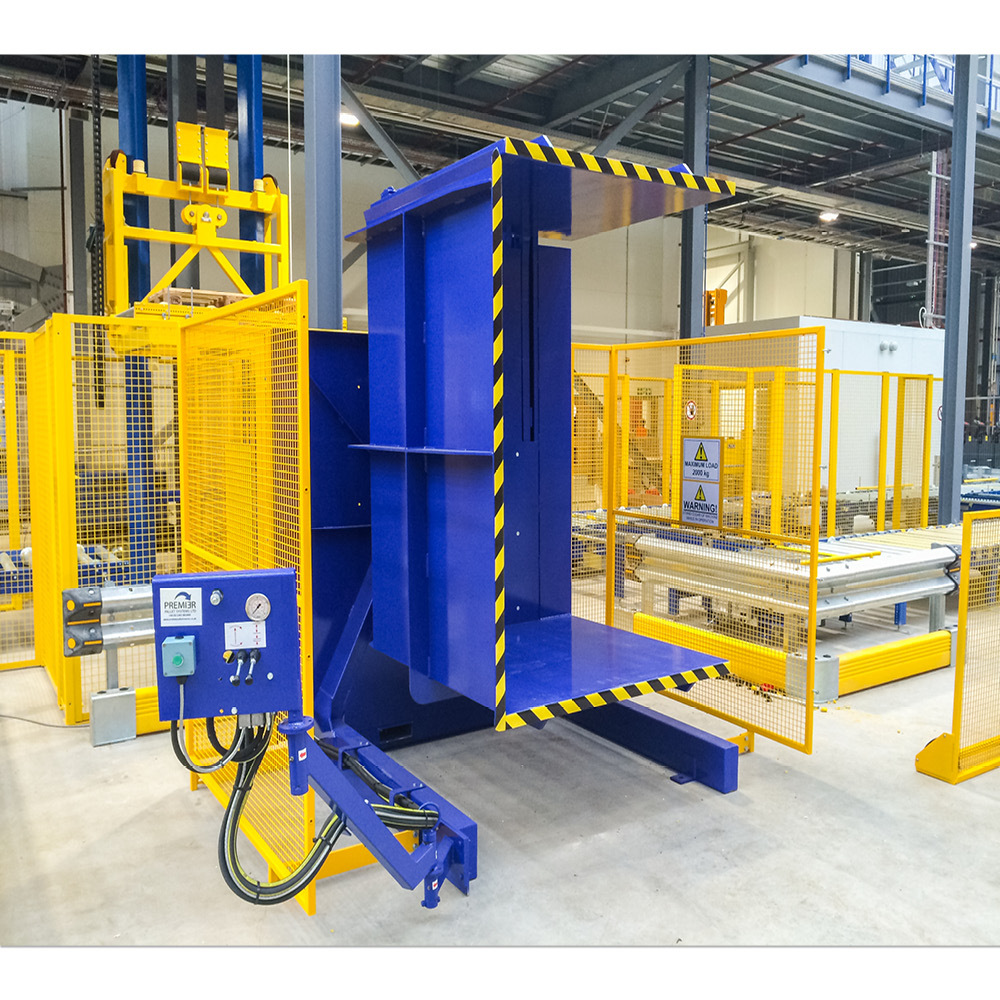
Drastically Reducing Cycle Times
The most immediate impact is on speed. Let's look at a realistic scenario. Manually transferring one ton of coffee sacks from a wooden pallet to a plastic export pallet might take two workers 15 to 20 minutes. They have to be careful, and they get tired. A pallet changer, operated by a single person, can do the same job in 90 seconds.
Think about what that means over the course of a day. If you need to switch 20 pallets for an export shipment:
- Manual Method: 2 workers x 20 minutes/pallet = 400 minutes (over 6.5 hours of labor)
- Pallet Changer: 1 operator x 1.5 minutes/pallet = 30 minutes
The machine accomplishes in 30 minutes what would have taken two workers almost an entire day. This frees up your team to work on other valuable tasks like quality control, inventory checks, or preparing the next shipment. This is not a small improvement; it's a fundamental change in your operational capacity.
Minimizing Product Damage and Waste
Every time a worker manually lifts a coffee sack, there's a risk of dropping it. A dropped bag can split open, spilling valuable beans. For delicate fruit, a dropped crate can mean bruising and spoilage, making the product unsellable. This damage is a direct financial loss.
A pallet changer handles the entire load as one solid unit. The clamping system secures the product before any movement occurs. The transfer is smooth and controlled. This virtually eliminates the risk of damage from manual handling errors. If you reduce product waste by even 1-2%, the savings on high-value products can be substantial over a year. For specialty coffee producers, where each bag has a high value, protecting the product is just as important as protecting the worker.
Streamlining Inbound and Outbound Logistics
A pallet changer acts as a flexible gateway for your warehouse.
- Inbound: Perhaps you receive raw materials or packaging on low-quality, broken, or non-standard pallets. Instead of letting these poor-quality pallets enter your warehouse where they can jam equipment or pose a safety risk, you can use the pallet changer at the receiving dock to quickly transfer the goods onto your own clean, high-quality internal pallets.
- Outbound: This is crucial for Colombian exporters. Your international customers often have strict requirements for pallets. They may demand plastic pallets, or heat-treated wooden pallets (ISPM 15). Instead of manually unstacking and restacking an entire finished shipment, you can simply run it through the pallet changer to swap to the required export pallet just before loading the container. This makes your operation more agile and responsive to customer demands, and it dramatically speeds up the final loading process.
What is the ROI and long-term value for a Colombian factory?
You see the benefits for safety and efficiency, but you still have to justify the cost. A new machine is a significant capital investment. You look at the price and think about all the other things you could spend that money on. You worry that it will take too long to see a return, and that the initial expense will hurt your cash flow. It's easy to get stuck analyzing the cost and forget to properly calculate the massive cost of doing nothing.
The Return on Investment (ROI) for a pallet changer is often much faster than factory owners expect, typically falling between 12 and 24 months. The key is to look beyond the purchase price and calculate the total savings it generates. By quantifying the reductions in labor costs, injury-related expenses, product damage, and the value of increased throughput, you will see a clear financial case. The machine doesn't just cost money; it actively saves and makes money for your business.
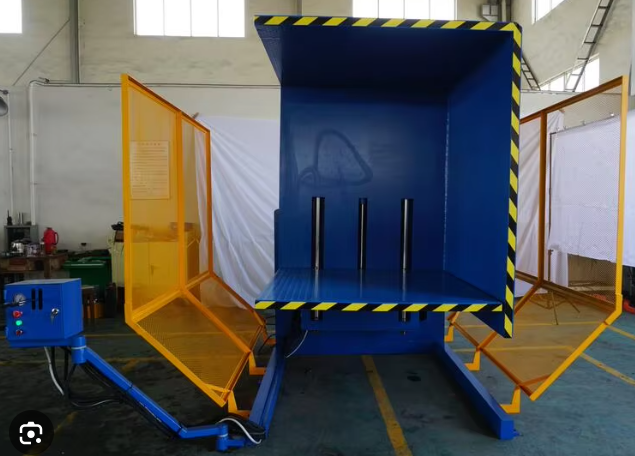
A Simple ROI Calculation
Let's build a conservative example for a small coffee exporting operation in Colombia.
Investment:
- Pallet Changer Machine + Installation: ~$25,000 USD (example cost)
Annual Savings:
- Labor Savings: You reassign one full-time worker from manual stacking to other tasks.
- Annual Salary + Benefits: ~$10,000 USD
- Worker Safety Savings: You prevent just one serious back injury claim, which can easily cost thousands in medical bills and lost time. You also see a reduction in insurance premiums.
- Conservative Annual Savings: ~$3,000 USD
- Product Damage Reduction: You reduce spilled coffee or bruised fruit by 0.5%. On shipments worth $1M annually, that's a direct saving.
- Annual Savings: ~$5,000 USD
- Efficiency Gains: You can now process shipments faster, allowing you to handle one extra container load per month.
- Value of Increased Throughput: ~$4,000 USD
Total Annual Savings: $10,000 + $3,000 + $5,000 + $4,000 = $22,000 USD
In this simple example, the ROI is just over 13 months ($25,000 / $22,000). After that, the machine is generating pure profit for your factory every year.
The Long-Term Strategic Value
The real value goes beyond this simple calculation. This is where my journey from being an employee to owning a factory has shaped my thinking. I stopped seeing machines as expenses and started seeing them as strategic tools.
Investing in this technology sends a powerful message. It tells your employees that you value their health and safety. It tells your customers that you are a modern, reliable, and professional operation. When you are competing for contracts with major international buyers from Europe or North America, being able to show them a clean, safe, and efficient facility can be the deciding factor. They have their own standards for supply chain ethics and reliability. A pallet changer demonstrates your commitment to meeting those high standards. It becomes a competitive advantage that helps your business grow and secure its future. This is the core belief at SHJLPACK: we provide total solutions that build stronger businesses.
Conclusion
A pallet changing machine is more than a piece of equipment. It is a strategic investment in the safety, efficiency, and future growth of your Colombian coffee or fruit factory.


